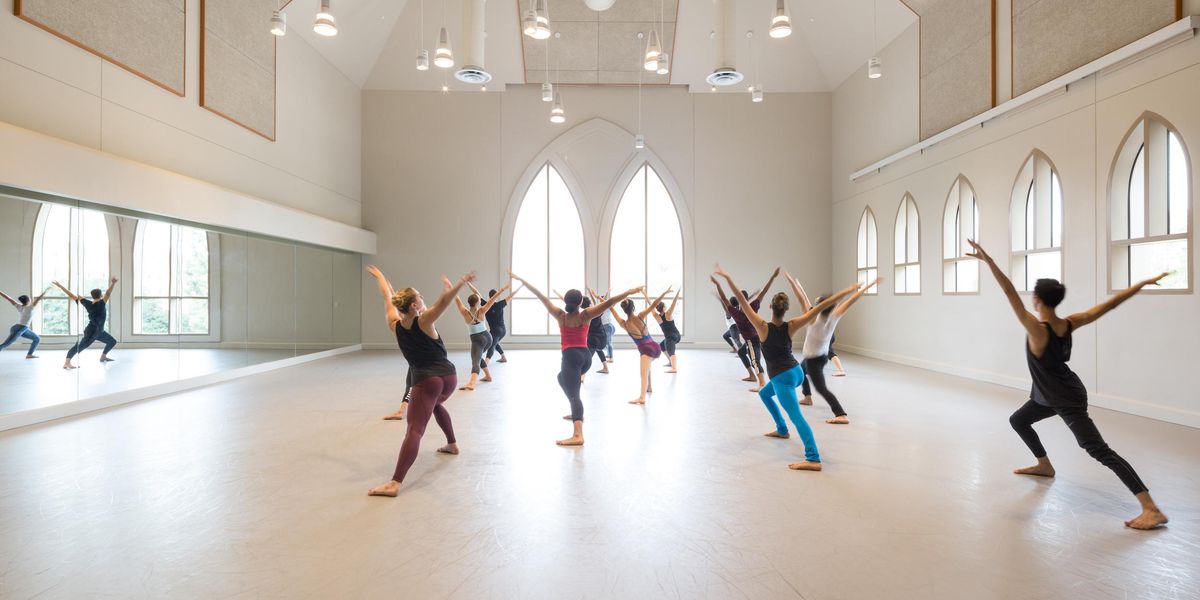On Broadway
Lisa Shriver gets down home and country in her first outing as a choreographer,
Ring of Fire.
The first and only time Lisa Shriver performed in a musical, it was a high-school production of Anything Goes in Colorado Springs. “I wanted Reno Sweeney,” she says. She got a small part instead. But it didn’t really matter. As far as she was concerned, her future lay not with Cole Porter but with Chopin, Tchaikovsky and Debussy. Her dream was to do ballet, not Broadway.
And yet, without ever having longed to be in A Chorus Line—or even just a chorus line—Shriver, 36, is making her Broadway debut as a choreographer this month. Having spent 13 years assisting choreographers like Lynne Taylor-Corbett, John Carrafa, and Susan Stroman, she’s now devised the clog dances, two-steps and reels that accompany the music of Johnny Cash in the new show Ring of Fire.
Needless to say, Johnny Cash’s prison songs, love ballads, and honky-tonk humor were no more a part of Shriver’s youthful album collection than were Porter or Rodgers and Hammerstein. But, Shriver says, she tends not to appreciate music until she’s danced to it. As a student at Southern Methodist University, she went dancing with friends at the gigantic Fort Worth country music club Billy Bob’s Texas, where she began to understand the music’s appeal. SMU is also where her nascent ballet career came to an early end.
Just before finishing her dance degree there, she ruptured a disc. Because it was misdiagnosed and not properly treated, she says, “It became one of those ‘You’ll never dance again,’ things. I’d been ‘Lisa the dancer’ since I was born. It was everything I lived for, sacrificed for. I didn’t go out on dates, I didn’t have a school life. And all of a sudden I was faced with my entire identity being altered.”
She decided to stay on in school, rehabbing her back and getting a history degree. “I couldn’t stand being still,” she says, and when Richard Sabellico, director of a Broadway revival of Gypsy, came to the school to direct a musical, she asked the dance professor doing the choreography if she could assist. Sabellico recommended her to Lynne Taylor-Corbett as a stage manager, and at 23, she came to New York. “I just did everything that came my way,” she says, ultimately working with Stroman for 10 years in a variety of capacities.
She learned much, she says, especially how to assemble and lead a team, so going from assisting to being in charge hasn’t been a big leap for her. “There is the obvious difference that I’m the one calling the shots,” she says. “Other than that, it feels the same—I look at the work ahead of me and see what it is I need to do, like all my other jobs.”
The work on Ring of Fire wasn’t typical. The show is structured like a revue, with one song following another and no plot or dialogue to connect them. But unlike a revue, it develops ongoing characters and relationships. Richard Malby, who directed one of the best Broadway revues ever, Ain’t Misbehavin’, conceived Ring of Fire and brought Shriver on board to handle the dance element. But, she says, “Both of us were wondering where choreography was going to fit in, and when and how. It was a brand new concept, and we weren’t sure to what extent there would be choreography.”
Ultimately, the music itself dictated that dance be integrated into the show. “The powerful thing about Cash’s music,” Shriver says, “is its ability to elicit such vivid images and emotions. For a choreographer, that’s a tremendous kind of material to work with.”
She and Maltby went through the show number by number, discussing how much staging each song seemed to demand. Some, like “Daddy Sang Bass,” felt like production numbers and got a good deal of dance; others were more intimate and needed only snippets. “Richard is very collaborative,” Shriver says. “It’s not like he thinks of choreography as something related only to steps.”
It’s a good thing, since the performers were cast for their singing voices and stage presence, not their dance training. Not only are there no real dancers in the cast of Ring of Fire—Maltby wanted to put the instrumentalists onstage and make them part of the action. Shriver found herself asking musicians who’d spent their careers hidden in the orchestra pit, “Can you play and dance at the same time?” The ultimate answer was yes, but it took work.
“I had to tailor the movement to their abilities and to their strengths,” she said. “I just kept trying things on them. It’s my job to make it look good, but more important to me was the story—not the steps. We tried to make it look organic, very natural. The characters in the show are regular people. It’s a story about an American life. So even though there’s a lot of staging and a lot of choreography, most of the time you won’t think that. I never knew how difficult it was to make something look spontaneous.”
Sylviane Gold has written about theater for
Newsday and The New York Times.




